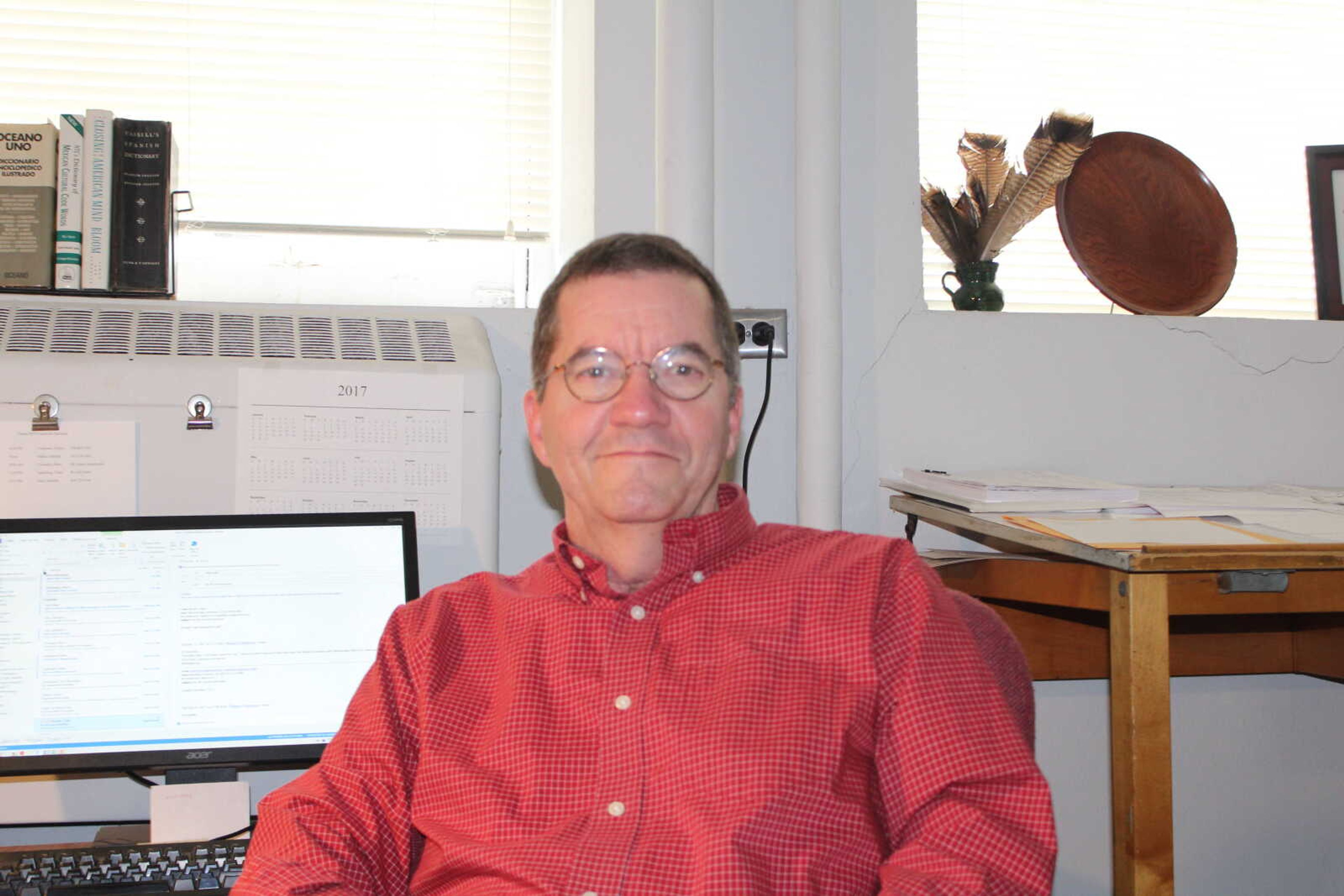Southeast anthropology professor strives to learn and promote language
It came as a complete surprise when Dr. Warren Anderson, a professor of anthropology at Southeast Missouri State University, received an email in July 2016 from an unknown woman. Anderson received an email from Trish Erzfeld,the director of the Perry County Heritage Tourism...
It came as a complete surprise when Dr. Warren Anderson, a professor of anthropology at Southeast Missouri State University, received an email in July 2016 from an unknown woman. Anderson received an email from Trish Erzfeld,the director of the Perry County Heritage Tourism.
“She was inviting me to be a part of a project involving the Absentee Shawnee (their language),”
The project Erzfleld emailed Anderson about was the Absentee Shawnee Revitalization Project, which seeks to promote and teach the language of the Shawnee Indian Tribe to members of the tribe and non-members.
Anderson, who was unfamiliar with the project at first, said he and Erzfeld met with Dr. William “Steve” Belko, the executive director of the Missouri Humanities Council because of his interest in seeing how the project could succeed.
“So we talked for quite a while and had a few meetings,” Anderson said. “And it resulted in him actually purchasing or contracting with the university for a quarter of my time to work on this project.”
Since starting the project, Anderson travels great distances for up to 9 hours from Missouri to Oklahoma to speak with native Shawnee speakers to become better acquainted with the language.
“My experiences there have been pleasant, conversations with people about what they want to have happen with Shawnee, what they like, what about their family members,” Anderson said.
Anderson described the language as having simpler sounds than English.
“English has a fairly complicated sound system,” Anderson said. “Their sentence structure is kind of fluid. Ours is pretty fixed, you have to say things in a certain order.”
While Shawnee maybe simpler than English, Anderson said it can become complicated in how words are built, due to the complexity of words with a lot many syllables.
“For example, if you have the word looking in English it has two parts, look and then this -ing part and those two go together to give it some meaning,” Anderson said. “A Shawnee word might have many, many more parts with all little sorts of little pieces of the meaning.”
Although, the project is currently being explored, Anderson said he has learned a lot about it already. So far Anderson has learned the history of the Shawnee tribe and other concepts.
Anderson also said he learned that the language of the Shawnee tribe is part of the Algonquian language family, which means it is a language that was formerly a part of a tribe’s ancestors.
“So the linguistic work has been pretty complicated for a long time of understanding it,” Anderson said. “But lots of Native-American languages have very linguistic aspects to it. It has been pretty well documented.”
Currently, Anderson teaches a special topics course in anthropology that correlates with his project.
The course even has a Facebook page set up where they can communicate back and forth with Shawnee speakers in Missouri and Oklahoma.
Anderson doesn’t have a set timeframe on how long he will continue working on the project, because it could continue on for years.
"Which is very typical of linguistic and anthropology projects,"
New projects are typically trial-and-error because it’s all about exploring and learning what works and what doesn’t. One problem Anderson has come across is that most of the speakers of Shawnee are elderly, which makes it more difficult.
“Elderly people don’t have the energy, they’re not going to travel, they’re not always healthy,” Anderson said. “There’s all sorts of complications.”
If the project involved younger speakers, Anderson said it would be simple in encouraging them to speak the language to their children.
“They’ve got kids in the home and you start to get a transmission across generations of the language and that’s how languages work,” Anderson said.
There’s not an issue of preserving or saving the language, according to Anderson.
“It is much more a question of are there people who want to learn it, are there members in the Shawnee tribe who want to learn this mode of communication that was common to their ancestors,” Anderson said. “That’s kind of where we’re working right now is to see what kind of interest there is in promoting the language and learning it.”







